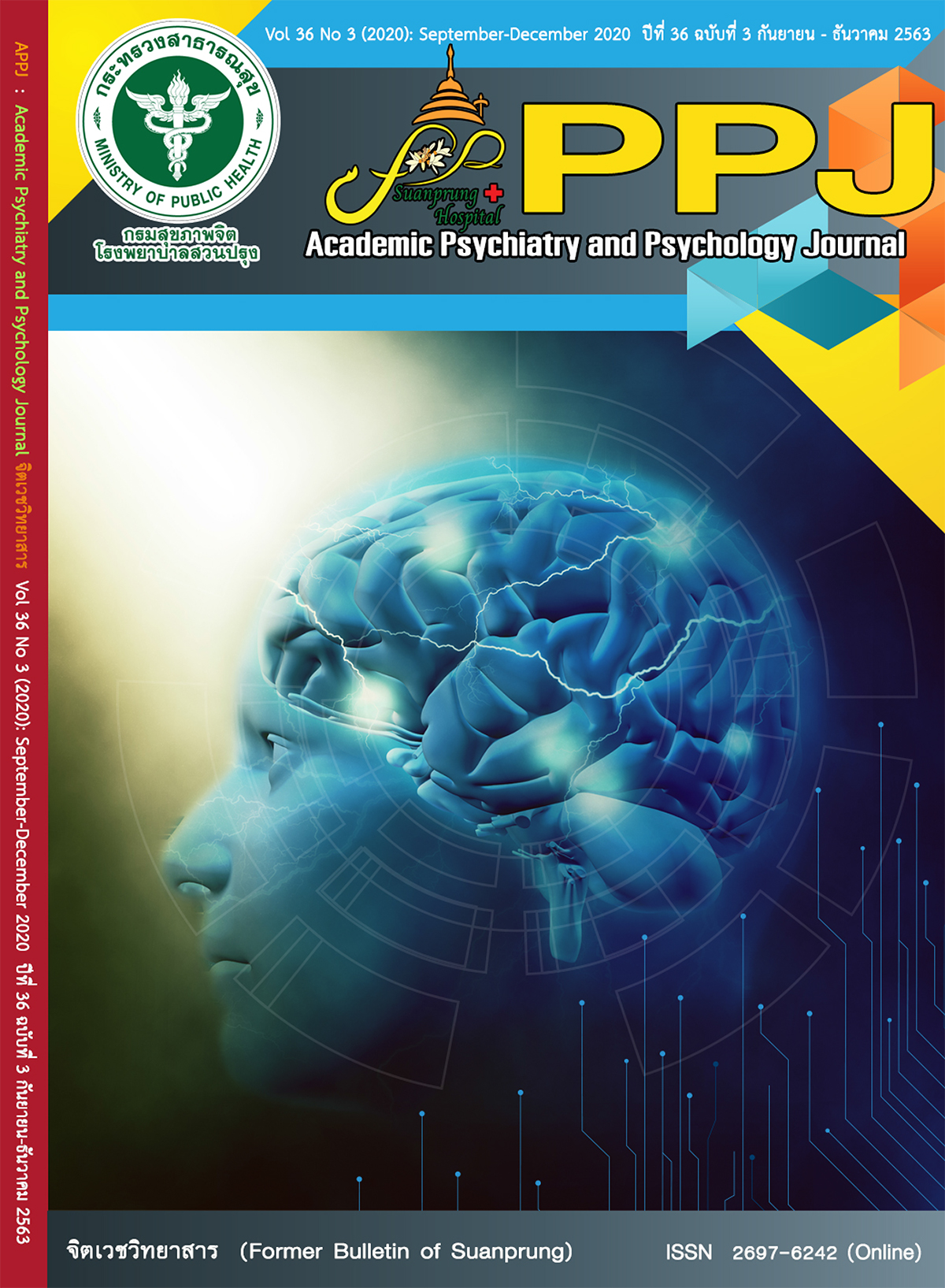Development of Computerized Decision Support Program on Prescribing High Risk CNS Drugs for Aging Outpatients in Hospitals
Main Article Content
Abstract
The proportion of Thai aging population has dramatically increased. With chronic diseases, most elderly had polypharmacy especially central nervous system (CNS) drugs. The adverse drug events might possibly happen. This quasi-experimental study aimed to develop and evaluate a computerized warning program on HOSxP that alerts when prescribing high-risk CNS drugs for elderly. This tool supports physicians and pharmacists to dispense drugs for aging patients with rational and appropriate use. The effect of the computerized warning program was evaluated from the reduction of 9 selected drug items of high-risk CNS drugs for elderly. Data of 3-month before and 2-month after the program implementation in 3 community hospitals were collected. The results showed that 1,432 elderly aged 71.7±7.84 years, female 63.1%, had been prescribed high-risk CNS drugs. After 2-month computerized warning program implementation, total CNS drugs have been prescribed with significant reduction (average 50.2±60.17 and 43.6±61.22 tablets/prescription, p<0.001, respectively). Five items of CNS drugs; including diazepam 2 mg and 5 mg, lorazepam 0.5 mg, amitriptyline 10 and 25 mg, had been decreasingly prescribed. 8 physicians and 5 pharmacists reflected that the computerized warning program is useful, easy to use and accessible. It did not promote only the rational drug use in at the national policy level abut also promoted the computerized program use for supporting quality health care in at the organization level.
Article Details
บทความหลังผ่านการปรับแก้จากกองบรรณาธิการแล้ว เป็นลิขสิทธ์ของวารสารจิตเวชวิทยาสาร โรงพยาบาลสวนปรุง กรมสุขภาพจิต กระทรวงสาธารณสุข ห้ามเผยแพร่เพื่อประโยชน์ทางการค้าโดยไม่ได้รับอนุญาต แต่อนุญาตให้เผยแพร่บทความดังกล่าวเพื่อประโยชน์ทางการศึกษาแก่ประชาชนทั่วไป ทั้งนี้กองบรรณาธิการไม่จำเป็นต้องเห็นด้วยกับบทความหรือข้อคิดเห็นใดๆ ที่ปรากฏในวารสารสวนปรุง
References
National Statistical Office. Survey report of Thai elderly population in 2007. Bangkok: National Statistical Office; 2011. P.47-9. (in Thai)
Foundation of Thai Gerontology Research and Development Institute. Situation of the Thai elderly 2016 [cited 2018 Aug]; Available from: http://www.ipsr.mahidol.ac. th/ipsrbeta/FileUpload/PDF/Report-File-535.pdf.
Limpawattana P. Drug use problem in elderly. I-San Journal of International Medicine 2011;10(3):52-65. (in Thai)
Mamun K, Lien CTC, Goh-Tan CYE, Ang WST. Polypharmacy and inappropriate medication use in Singapore nursing homes. . Ann Acad Med Singapore. 2004 Jan;33 (1):49-52.
Ploylearmsang C, Kerdchantuk P, Soonkang K, Worasin P, Kedchareon P. Drug-related problems and factors affecting on drug use problems in elderly of Banmakok, Kantharawichai, Maha Sarakham Province. Journal of Science and Technology Mahasarakham University 2012:804-12. (in Thai)
Hajjar ER, Cafiero AC and Hanlon JT. Polypharmacy in elderly patients. Am J Geriatr Pharmacother. 2007;5(4):345-51.
Ploylearmsang C, Teankanitikula K, Choppradit C, Soonthorn S, Suwankesawong W. Development of medicine list for screening and reducing medication-related problems in Thai elderly. Nonthaburi: International Health Policy Program; 2014. (in Thai)
Fick DM, Cooper JW, Wade WE, Waller JL, et al. Updating the beers criteria for potentially inappropriate medication use in older adults: Results of a US consensus panel of experts. Arch Intern Med. 2003 Dec 8, 2003;163(22):2716-24.
Gloth FM. Medication management in older adults. In: Koch S, Gloth FMandNay R, editors. Inappropriate prescribing : Beers criteria, polypharmacy, and drug Burden. Baltimore, MD: Division of geriatric medicine and gerontoloty; 2010. p.119-25.
Gallagher P, O'Mahony D. STOPP (Screening Tool of Older Persons' potentially inappropriate Prescriptions): Application to acutely ill elderly patients and comparison with Beers' criteria. Age Ageing. 2008 Nov 1, 2008;37(6):673-9.
Smith D, Perrin N, Feldstein A, Yang X, Kuang D, Simon S, et al. The impact of prescribing safety alerts for elderly persons in an electronic medical record. Arch Intern Med. 2006 May 22;166(10):1098-104.
Laemkom A, Somsaad P, Rattanakiat S. Effect of medication reconciliation with computer based program on medication error at Phukhieo Hospital, Chaiyaphum Province. Isan Journal of Pharmaceutical Science. 2012;8(1):150-8. (in Thai)
Sausukpaiboon P. Medication errors reported by the computer program developed in a Large Hospital. Thai Journal of Pharmacy Practice 2012;4(1):3-16. (in Thai)
Sommart S, Chaiyasong S. Development of a hypokalemia-drug alert system in Phanomphrai Hospital, Roi-Et province. Journal of Science and Technology Mahasarakham University. 2015;34(6):593-601. (in Thai)
Suratemeekul C. HOSxP implement services. [cited 2018 Aug]; Available from: https://hosxp.net/joomla25/index.php/servicesmenu/hosxp-implement-services
Sub-committee of Rational Drug Use Promotion. Rational drug use hospital manual 2015; Chirat Chayakul, editor. [cited 2019 Sep]. Available from: https://www.hsri. or.th/sites/default/files/attachment/RDU%20Book.pdf
Tambyln R, Huang A, Taylor L, Kawasumi Y, Barlett G, Grad R, et al. A randomized trial of the effectiveness of on-demand versus computer-triggered drug decision support in primary care. J Am Med Inform Assoc. 2008 Jul-Aug;15(4):430-8.
